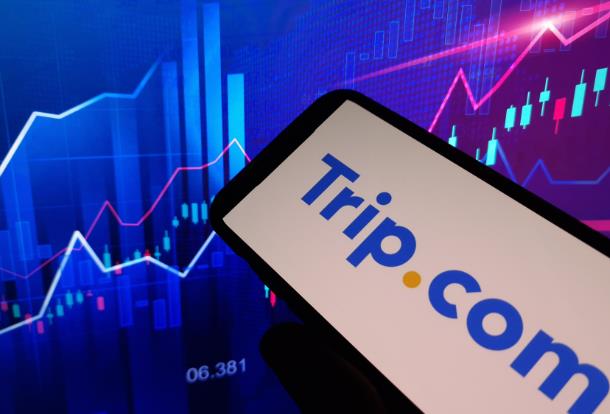ChinaTravelNews, Ritesh Gupta - The significance of first party data and crafting “audience profile” is increasingly coming to the fore, and Chinese travel companies need to step up their initiatives in order to be data-driven. This is being highlighted by several stakeholders, be it for travel technology specialists such as Ireland-based Datalex or advertising technology (ad tech) companies such as Vpon Big Data Group.
“Most (travel) advertisers lag behind in terms of investment in their own data capabilities,” says Arthur Chan, Chief Operating Officer at Vpon Big Data Group.
Significance of core data asset
As highlighted by Blair Koch, Datalex’s CTO and President USA during the 2017 Airline Distribution Conference in Shanghai, it is imperative for airlines to have a core data asset, a platform that supports data from various sources, including collection of all transactional data from a travel company’s operational and customer systems.
“For a majority of them (advertisers) we have been working with, say 90% of them, don’t have a sense of data collection,” says Arthur Chan, Chief Operating Officer at Vpon Big Data Group.
A company-owned data platform is essentially a centralized repository of data about customers and to store a “profile”. Of course, big spenders like Ctrip are equipped with technical know-how and store data. But that’s not the case with relatively smaller advertisers. “The absence of high-quality 1st party data inhibits their own performance or optimization of budgets, including working with 3rd party ad tech companies to better ascertain the entire planning and shopping journey of travellers,” said Chan.
What a core data asset can do?
The understanding of a traveller within an enterprise’s touchpoints (say hotel.com, at the property etc.) can only improve by collection of data and acting on the insight resulting from the same. Also, this means a snapshot of a traveller isn’t only restricted to one or two contexts only - say social and search.
Here are a couple of scenarios:
1. Advertising: In the context of advertising, if airlines or hotels gear up for a data platform then they can effectively spend on ad inventory on programmatic ad exchanges, optimize their budget on impressions and in doing so attribute conversions to plan their future campaigns. “When airlines or hotels have their own data sources to rely on, their learning cycle (about limiting wastage on ad spending and being sharper being precise targeting), would be much shorter,” said Chan.
So how do advertisers typically work in the absence of a customer data platform or data management platform? In the absence of such platforms, there is no astute data management capability. Whenever advertisers work with 3rd party DSPs (demand side platform, it allows advertisers to connect with various data and ad exchanges) or ad network or media partners, they initiate a campaign and they start from the scratch. So Baidu, Tencent, Alibaba etc. only act as a channel (for these advertisers). As long as a campaign is delivering it is continued, and then there is a gap, there is no continuity (in how the audience tends to respond to a particular media or ecosystem). It becomes a channel-specific strategy. And this needs to be avoided.
2. Customer experience: As much as airlines and hotels are counting upon IT companies to improve upon their respective transactional/ operational systems, it is also important for airlines to ensure their core data asset in place to fully capitalize on the potential of such new offerings.
In fact, a core data asset must complement refined IT capabilities of airline. TravelSky acknowledges the significance of the same. It needs to be noted that last December TravelSky introduced their QUICK Passenger Retailing System, a hybrid system for medium- and small-sized carriers. It encompasses features from a traditional Passenger Service Solution (PSS) and blends them with e-commerce tools as a tactic to capitalize on the emerging opportunity of retailing. So this means core functionalities of PSS plus ecommerce capabilities would be facilitated via one platform, where before an offer is made, the system would consider preferences, behaviour and purchase history, featuring a rules engine to evaluate the most appropriate products to offer, their sort / bias order etc.
Let’s say an airline that is working on data around passengers, and also supporting integration of data from other 3rd party sources, then how the same is reflecting on the customer-facing interfaces being served by the staff at the airport (check-in and boarding gate), lounge or in-flight?
“In order to enable airlines to provide excellent service at the airport, it is key to recognize the passenger,” said Lars Gaebler, Director - Marketing and Sales QUICK PRS, TravelSky Technology.
“This is true where an airline has its own staff on the ground, usually having access to more data sources, but becomes even more relevant where Ground Handling services are outsourced. By smartly tagging passengers and allow access to available data from different sources and departments, airline staff or representatives of an airline for that matter, should be able to determine how to best service a passenger.”
Gaebler added, “Such tags can go from “first time flyer”, “social media influencer” to “always prefers 7A”. The available data streams should be best utilized by airlines and ground handlers in agreeing on practices written down in manuals to standardize service provision. Admittedly this might be less relevant on a day of in-disrupted operation, however becomes extremely relevant, when something does not go as planned.”
Technically this means we need to break up data silos, containing valuable information and make sure, that store customer data in a single source, such as a PRS enriched by third party content, added Gaebler.
“After that it also important that we have a good presentation layer towards the airline staff in order to give them the right information at the right time, as this can differ from airline to airline we need to keep a PRS flexible and adaptable. In the future, I believe that social media posts (Weibo, Facebook, Twitter etc.) will be important to give passengers the feeling that airlines do actually care about the service they provide,” said Gaebler.
As for analytics based on the data around customers, their clicks, interactions etc., can it be all real-time? For instance, a passenger clicks for ground transportation options for arrival city on airline.com within two hours of his flight departure. Can this traveller be presented with exact ground transportation at the airport or an email or a push notification?
Gaebler mentioned that technically a real-time interface is possible; however it rests with the airline and content provider in combination with a PRS provider to ensure that such data streams can be incorporated.
“We aim to work together and hope that NDC will further enables us, to have a globally accepted standard adopted not only by airlines and its direct distribution channels for air tickets, but in the same way by service providers along the travel value chain. For some services, it will be unavoidable to do such transactions in real-time, as pricing and availability are elastic. I think on the car rental and hotel bookings in conjunction with flight tickets this is the norm already. This will require a PRS to not only act as a receiver of booking requests, but likewise be able to pass booking requests to a third party and combine the different services by potentially different provider in a single offer and return it to the interested party. Logically the PRS must be able to store such data of different services and allow the passenger to service (rebook, cancel) an order with different components accordingly. This is certainly not trivial, but will be expected of the passenger in the future and is something traditional PSS with a structure around PNR and e-ticket will struggle with,” said Gaebler.
Gearing up for a core data asset
Of course, travel companies need to get an enterprise level – probing areas such as what data needs to be collected from each touchpoint, what system will be involved at each touchpoint, where the data will be stored at that touchpoint, who will be the owner of that data once is collected etc.
As highlighted by the team at Relay42, being customer-centric is a journey in itself.
3 key recommendations:
1. Set up test-and-learn team culture. It could feature a cross-disciplinary team ready to learn, accelerate and improve.
2. Focus on small deliverables, go for fast results. Rely on a platform to connect customer journeys bit-by-bit, to deliver initial impressive results within months.
3. Finally scale for success.




